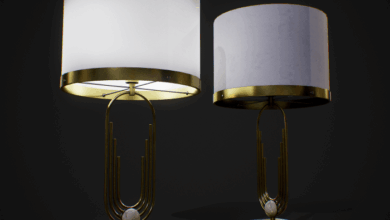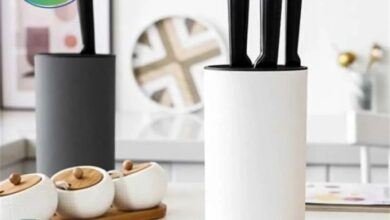
Mini Cotton Leather Clutch DIY: A stylish and practical project, this DIY clutch is the perfect blend of function and fashion. The unique combination of cotton and leather materials creates a versatile accessory that can be dressed up or down, making it ideal for any occasion.
Crafting your own clutch not only allows you to save money, but it also gives you the opportunity to personalize your style and express your creativity.
This guide will walk you through every step of the process, from choosing materials and designing your clutch to assembling and finishing it. Whether you’re a seasoned sewer or a beginner, you’ll find everything you need to create a beautiful and functional clutch that you’ll love to carry.
Mini Cotton Leather Clutch DIY: A Stylish and Practical Project
A mini cotton leather clutch is a versatile accessory that can elevate any outfit, from casual to formal. Its compact size makes it perfect for carrying essentials like your phone, wallet, and keys, while its stylish design adds a touch of sophistication to your look.
Crafting your own mini cotton leather clutch offers several advantages. It’s a cost-effective way to create a unique and personalized accessory, allowing you to express your creativity and style. Plus, you can customize the design, materials, and embellishments to perfectly match your taste and wardrobe.This project uniquely combines cotton and leather, creating a beautiful and durable clutch.
The cotton fabric provides a soft and comfortable feel, while the leather adds strength and structure. The contrast between these two materials adds a touch of visual interest, making your clutch stand out.
Materials and Tools

Creating a mini cotton leather clutch requires a thoughtful selection of materials and tools to ensure a successful and stylish outcome. This section will guide you through the essential components, providing recommendations for choosing the right materials and outlining the necessary tools for your project.
Materials
The materials you choose will significantly impact the look and feel of your clutch. Here’s a list of essential materials and tips for selecting the right ones:
- Cotton Fabric:Choose a sturdy cotton fabric with a nice drape. Cotton canvas, quilting cotton, or even denim can be good choices. Consider the weight and texture of the fabric for your desired look and feel. For a more structured clutch, opt for a heavier fabric like canvas.
- Leather:Select a leather that complements the cotton fabric and suits your style. Consider the thickness, texture, and color of the leather. For a casual look, choose a soft, thin leather like suede or nubuck. For a more formal look, opt for a thicker, more structured leather like full-grain leather.
- Interfacing:Interfacing adds structure and stability to the cotton fabric. Choose a fusible interfacing that matches the weight of your cotton fabric.
- Zipper:The zipper is the functional element of your clutch, so choose a high-quality zipper that matches the style of your project. Consider the length and color of the zipper.
- Thread:Select thread that matches the color of your materials. Use a strong thread suitable for both cotton and leather.
- Hardware:Hardware includes items like a zipper pull, magnetic closure, and decorative rivets. Choose hardware that complements the style of your clutch.
Tools
The tools you use will help you create a professional-looking clutch. Here’s a list of essential tools:
- Sewing Machine:A sewing machine is essential for stitching the fabric and leather together.
- Scissors:You’ll need a pair of sharp fabric scissors and a pair of leather shears for cutting the materials.
- Ruler:A ruler is necessary for measuring and marking the fabric and leather.
- Marking Tools:Use a fabric pencil or chalk to mark the fabric and leather.
- Hammer:A hammer is needed for setting rivets and other hardware.
- Rotary Cutter (Optional):A rotary cutter can be helpful for cutting large pieces of fabric.
- Sewing Pins:Sewing pins are useful for holding the fabric and leather in place while sewing.
- Iron:An iron is necessary for fusing the interfacing to the cotton fabric.
- Sewing Gauge:A sewing gauge is helpful for measuring seam allowances.
- Seam Ripper:A seam ripper is a handy tool for removing mistakes.
Design and Pattern
The design of your mini cotton leather clutch is where your creativity truly shines! This section will explore different design options for a mini cotton leather clutch, including shape, size, and closure style. It will also guide you through creating a pattern or using a pre-made pattern for the clutch, and discuss the importance of considering the scale and proportions of the design.
Shape and Size
The shape and size of your clutch are crucial considerations that will influence its overall aesthetic and functionality.
- Rectangular or Square:This classic shape is both versatile and easy to work with. It offers ample space for essentials and can be tailored to various sizes depending on your needs.
- Trapezoidal:A trapezoidal shape provides a more modern and unique look. It can be designed with a wider base for greater capacity or a narrower base for a more compact design.
- Circular:A circular clutch offers a distinct and feminine appeal. However, it might be less practical for carrying larger items due to its limited space.
- Envelope:An envelope-style clutch features a flap closure that folds over the opening, adding a touch of elegance and security.
When choosing a size, consider the items you intend to carry and the overall style you’re aiming for. A mini clutch is typically designed for small essentials like a phone, wallet, and keys. However, you can adjust the dimensions to accommodate larger items if needed.
Closure Style
The closure style adds a finishing touch to your clutch and ensures the security of your belongings.
- Magnetic Closure:This is a simple and elegant option that provides a secure hold without the need for zippers or buttons.
- Zipper Closure:Zippers offer the highest level of security and are suitable for clutches that carry valuable items.
- Button Closure:Buttons can add a vintage touch and can be customized with different materials and designs.
- Flap Closure:A flap closure, often seen in envelope-style clutches, provides a stylish and secure closure option.
Creating a Pattern
Creating a pattern for your clutch is a crucial step in ensuring a well-fitting and professional-looking finished product.
- Drafting a Pattern:If you’re comfortable with pattern drafting, you can create your own pattern using graph paper or specialized software. This allows for complete customization and ensures the pattern perfectly matches your design vision.
- Using a Pre-made Pattern:Numerous online resources and craft stores offer pre-made patterns for clutches, eliminating the need for pattern drafting. These patterns provide a convenient starting point and ensure accurate measurements.
When creating or using a pattern, it’s essential to consider the scale and proportions of the design. The pattern should be accurate and reflect the desired dimensions of your clutch.
Importance of Scale and Proportion
Scale and proportion play a significant role in the overall aesthetics and functionality of your clutch.
Making a mini cotton leather clutch is a fun DIY project, and it’s amazing how much you can personalize it with different embellishments. I recently saw some gorgeous glass bead jack o lanterns that reminded me of how cool it would be to use glass beads to add some extra flair to the clutch.
Maybe I’ll even try making a miniature version of those jack o lanterns to attach to the clutch for a unique Halloween look!
Scalerefers to the size of the clutch in relation to other objects or the wearer’s body. Proportionrefers to the balance and harmony of the different elements within the design, such as the width, height, and depth of the clutch.
A well-proportioned clutch will appear visually pleasing and will be comfortable to carry. For example, a mini clutch should be small enough to be easily carried but large enough to hold essential items.
Cutting and Preparing Materials
Now that you have your pattern, it’s time to cut your materials! This step requires precision to ensure your clutch comes together beautifully. We’ll cover how to cut your cotton fabric, leather, and interfacing, and how to prepare your leather for a smooth and professional finish.
Making a mini cotton leather clutch is a great way to personalize your style and add a touch of handmade charm to your accessories. While the project itself is straightforward, you can elevate the design with some unique embellishments. For example, you could incorporate a braid detail on the closure flap, using a technique like a twist on the classic three strand braid , to create a more intricate and eye-catching look.
This simple addition will add a touch of sophistication and make your mini clutch truly stand out.
Cutting the Fabric, Leather, and Interfacing
Accurate cutting is crucial for a successful project. Here’s how to cut your materials with precision:
- Use a rotary cutter and cutting mat:These tools provide clean, precise cuts, especially for the cotton fabric and interfacing.
- Use a sharp utility knife for the leather:A sharp utility knife is ideal for cutting leather, ensuring clean edges without fraying.
- Mark your pattern pieces:Use a fabric marker or tailor’s chalk to mark your pattern pieces directly onto the fabric, leather, and interfacing. This helps you stay accurate while cutting.
- Cut with a ruler:Use a ruler to guide your rotary cutter or utility knife, ensuring straight and precise cuts.
- Double-check your measurements:Before cutting, double-check your measurements against the pattern pieces to ensure accuracy.
Preparing the Leather
Preparing your leather before sewing is essential for a professional finish. Here’s how:
- Condition the leather:Conditioning leather helps to soften it and prevent it from drying out. You can use a leather conditioner or a simple mixture of beeswax and oil.
- Smooth the leather:Use a leather smoother or a burnishing tool to smooth out any rough edges or imperfections on the leather surface.
Assembling the Clutch
Now that all the pieces are cut and prepared, it’s time to bring your clutch to life! This section will guide you through the process of sewing the cotton fabric and leather together, creating the main body of the clutch, attaching the zipper, and securing the closure.
Let’s get started!
Sewing the Cotton Fabric and Leather Together
To begin, you will need to sew the cotton fabric and leather together to form the main body of the clutch. This step requires precision and care, as it lays the foundation for the final look and functionality of your clutch.
- Pinning the Fabric and Leather:Before sewing, pin the cotton fabric and leather together along the edges that will be sewn. Ensure that the right sides of the fabric are facing each other and the leather is on the outside. Pinning ensures that the layers stay in place while sewing.
- Sewing the Layers:Use a strong sewing machine needle and thread suitable for both cotton and leather. Start by sewing along the bottom edge of the clutch, securing the zipper tape in place. Then, sew along the sides and top edges, leaving a small opening at the top for turning.
- Turning and Pressing:Carefully turn the clutch right-side out through the opening at the top. Use a blunt object, like a chopstick or a knitting needle, to push out the corners. Press the seams flat with a warm iron, using a pressing cloth to protect the leather.
- Closing the Opening:Once pressed, hand-stitch the opening closed using a slip stitch. This will create a clean and invisible finish.
Attaching the Zipper
Now, let’s attach the zipper to the clutch. The zipper will provide a secure and stylish closure for your clutch.
I’m finally getting around to finishing my mini cotton leather clutch DIY project, and it’s turning out even better than I imagined! I’m taking inspiration from the rugged beauty of the Portuguese coast, especially after seeing the magicseaweed last two days at dramatic Nazare , where those waves are just incredible.
The raw energy of those waves reminds me of the raw materials I’m using in my clutch – the cotton, the leather, and the hardware. I think this little bag is going to be perfect for a night out on the town, or even just a casual day trip to the beach.
- Zipper Placement:Before attaching the zipper, mark the center point of the top edge of the clutch. This will be the center point for the zipper. Position the zipper tape on the right side of the clutch, aligning the center of the zipper with the marked center point.
Pin the zipper tape in place, ensuring it is centered and straight.
- Zipper Sewing:Sew the zipper tape to the clutch using a zipper foot on your sewing machine. Sew along the edge of the zipper tape, securing it to the cotton fabric and leather. Be careful not to sew over the zipper teeth.
Repeat this process for the other side of the zipper.
- Zipper Pull Tab:Once the zipper is attached, attach a decorative zipper pull tab. This will make it easier to open and close the clutch.
Securing the Closure
The final step in assembling your clutch is to secure the closure. This will ensure that your belongings stay safely inside the clutch.
- Closure Placement:Choose a decorative closure, such as a snap or a magnetic closure. Mark the placement of the closure on the front flap of the clutch, ensuring it aligns with the zipper.
- Closure Attachment:Follow the manufacturer’s instructions for attaching the closure. This may involve sewing, gluing, or using a specialized tool.
Finishing Touches
Now that your mini cotton leather clutch is assembled, it’s time to add the finishing touches that will make it truly unique and stylish. This stage allows you to express your creativity and personalize your project.
Adding Decorative Details
Adding decorative details to your clutch can elevate its look from simple to stunning. You can choose from a variety of techniques, such as stitching, embellishments, or hardware, to create a design that reflects your personal style.
- Stitching:Stitching can add a touch of elegance and sophistication to your clutch. You can use contrasting thread colors to highlight the design, or choose a thread color that complements the leather and cotton fabric. For example, you could use a bold, contrasting thread to create a decorative stitch around the edges of the clutch or to add a geometric pattern to the front panel.
- Embellishments:Embellishments, such as beads, sequins, or studs, can add a touch of sparkle and personality to your clutch. You can use these embellishments to create a simple design or a more intricate pattern. For instance, you could use small, silver beads to Artikel the shape of the clutch or add a cluster of colorful sequins to the center of the front panel.
- Hardware:Hardware, such as snaps, zippers, or buckles, can add a functional and stylish element to your clutch. For example, you could add a snap closure to the top of the clutch or a decorative zipper to the front panel.
Personalizing Your Design
There are endless possibilities when it comes to personalizing your clutch. You can create a design that reflects your interests, personality, or even a special occasion.
- Monogram:Add your initials or a meaningful word to the clutch using a leather stamp or a stencil and paint.
- Embroidered Design:If you are comfortable with embroidery, you can create a unique design using colorful threads on the cotton fabric. This could be a simple floral motif or a more intricate pattern.
- Patches:Attach a vintage patch, a band logo, or a fabric patch with a meaningful design to personalize your clutch.
Finishing the Edges
Finishing the edges of the leather and cotton fabric is essential for a polished and professional look. Untreated edges can fray and look messy, diminishing the overall appearance of your clutch.
- Leather Edges:You can use a leather edge paint or sealant to protect the edges of the leather and prevent them from fraying. These products come in a variety of colors to match your leather. Apply the paint or sealant evenly to the edges of the leather using a small brush.
- Cotton Fabric Edges:To prevent the cotton fabric edges from fraying, you can use a serger or zigzag stitch on your sewing machine. This will create a neat and secure finish.
Variations and Ideas
The beauty of DIY projects lies in their adaptability. This mini cotton leather clutch is no exception. You can easily personalize it by experimenting with different materials, closures, and embellishments. Let’s explore some creative options to make your clutch truly unique.
Alternative Materials
Exploring a range of materials can give your clutch a distinct look and feel. Here are a few ideas:
- Canvas:Durable and readily available, canvas offers a casual and rugged aesthetic. Choose a sturdy canvas fabric with a tight weave for a structured clutch. Consider using waxed canvas for added water resistance.
- Denim:A classic choice, denim adds a touch of vintage charm. Opt for a medium-weight denim for a balanced look. You can even use upcycled denim from old jeans for a sustainable approach.
- Suede:Suede provides a luxurious and soft touch. Choose a smooth suede for a sleek look or a textured suede for a more rustic feel. Remember that suede can be delicate, so handle it with care during construction.
Closure Options, Mini cotton leather clutch diy
The closure is a key design element that adds functionality and style.
- Magnetic Snaps:These offer a sleek and secure closure. They are easy to install and provide a subtle yet effective way to keep your belongings safe.
- Buckles:Buckles add a touch of vintage charm and can be used for both decorative and functional purposes. Choose from a variety of styles, such as a simple pin buckle or a more elaborate toggle buckle, to complement the overall design.
- Zippers:Zippers offer a secure and versatile closure option. They are available in a wide range of colors and styles, allowing you to match the zipper to your clutch’s aesthetic.
Color, Pattern, and Texture
Incorporating color, pattern, and texture adds visual interest and personality to your clutch.
- Color:Experiment with different colors to create a vibrant or understated look. You can use solid colors, contrasting colors, or even create a gradient effect.
- Pattern:Patterns add a playful touch. Choose from geometric patterns, floral prints, or even abstract designs. You can use fabric with a built-in pattern or create your own using fabric paint or markers.
- Texture:Adding texture can create a unique visual and tactile experience. Consider using embossed leather, textured fabric, or even adding embellishments like beads or studs.






